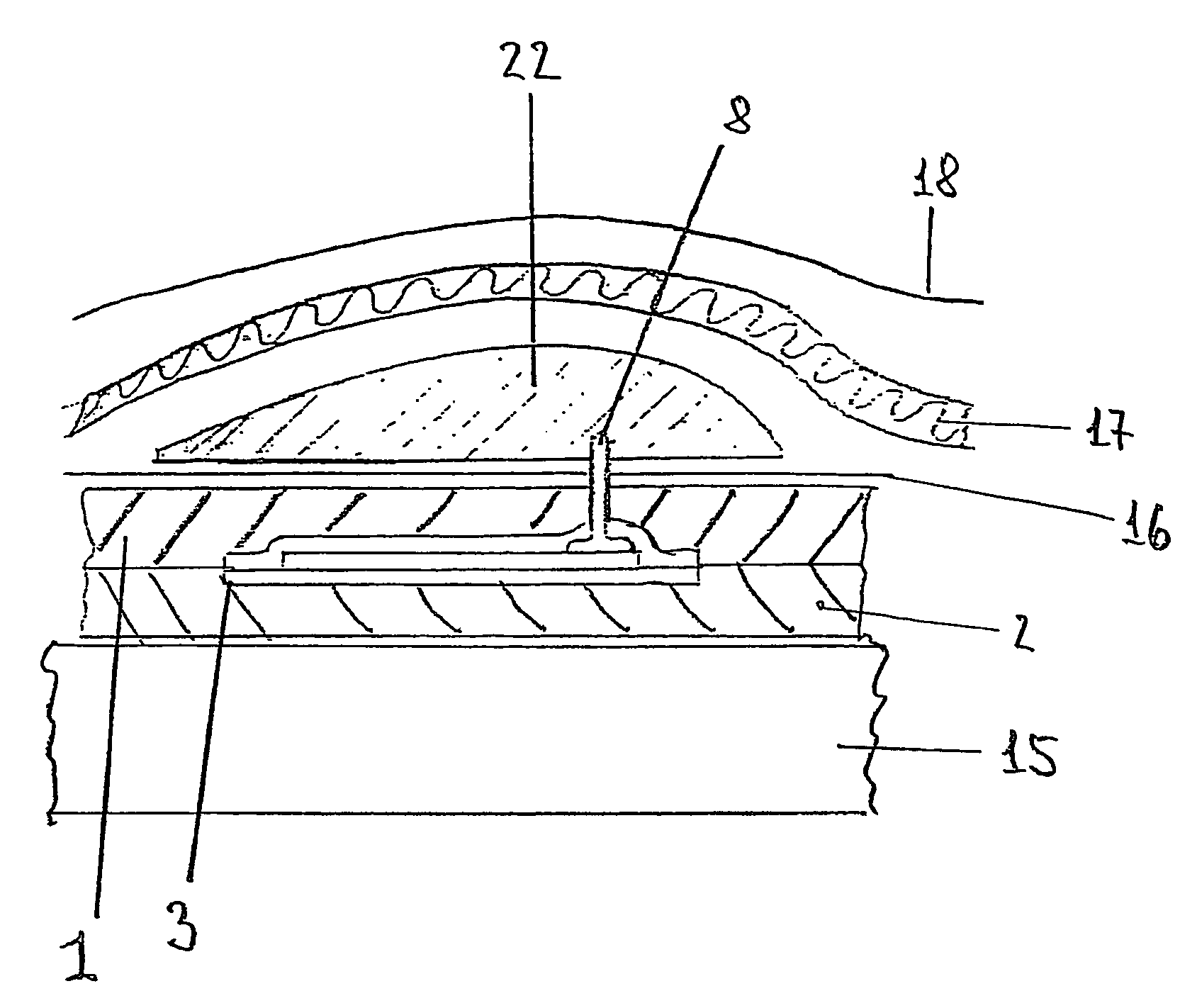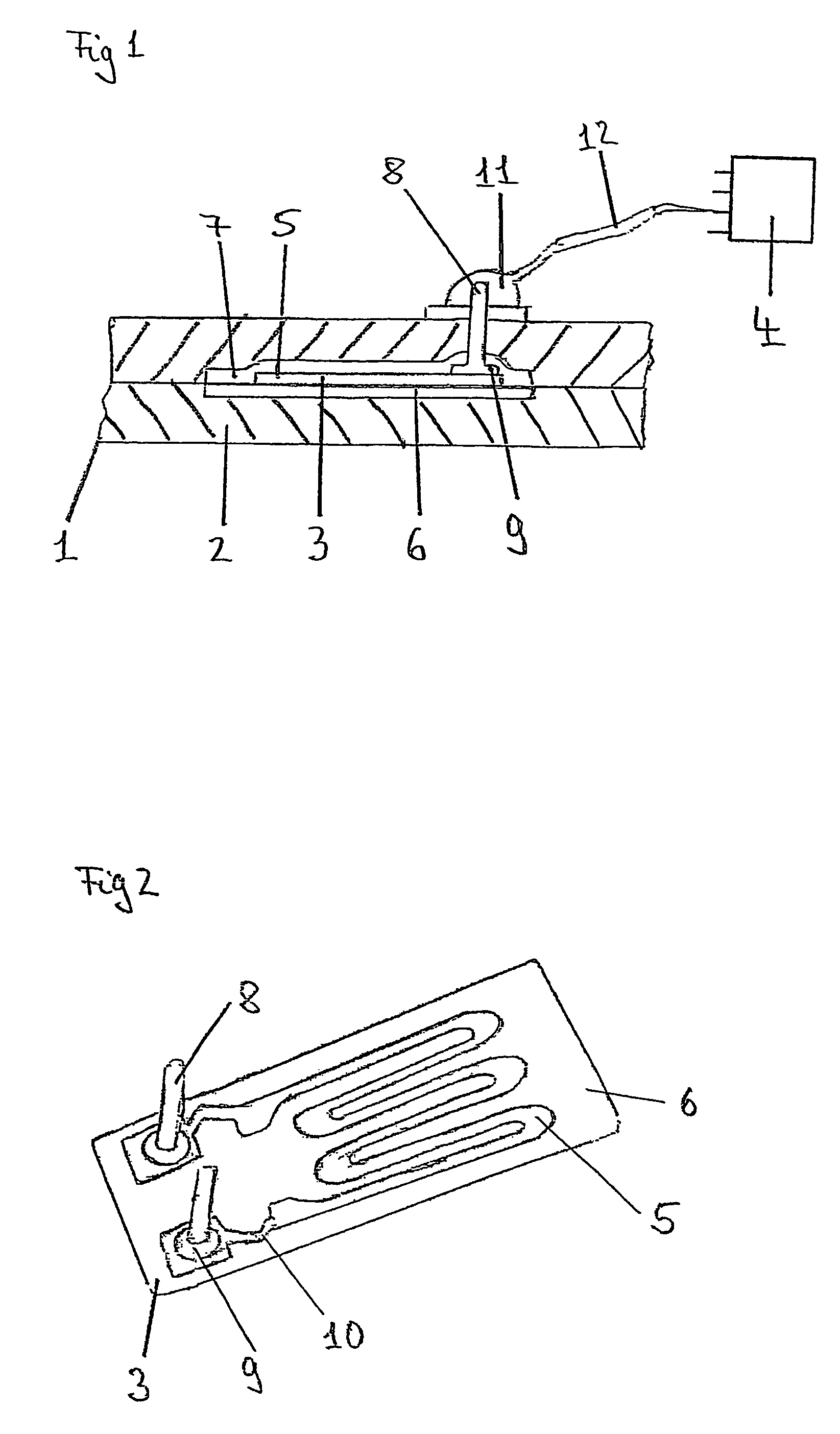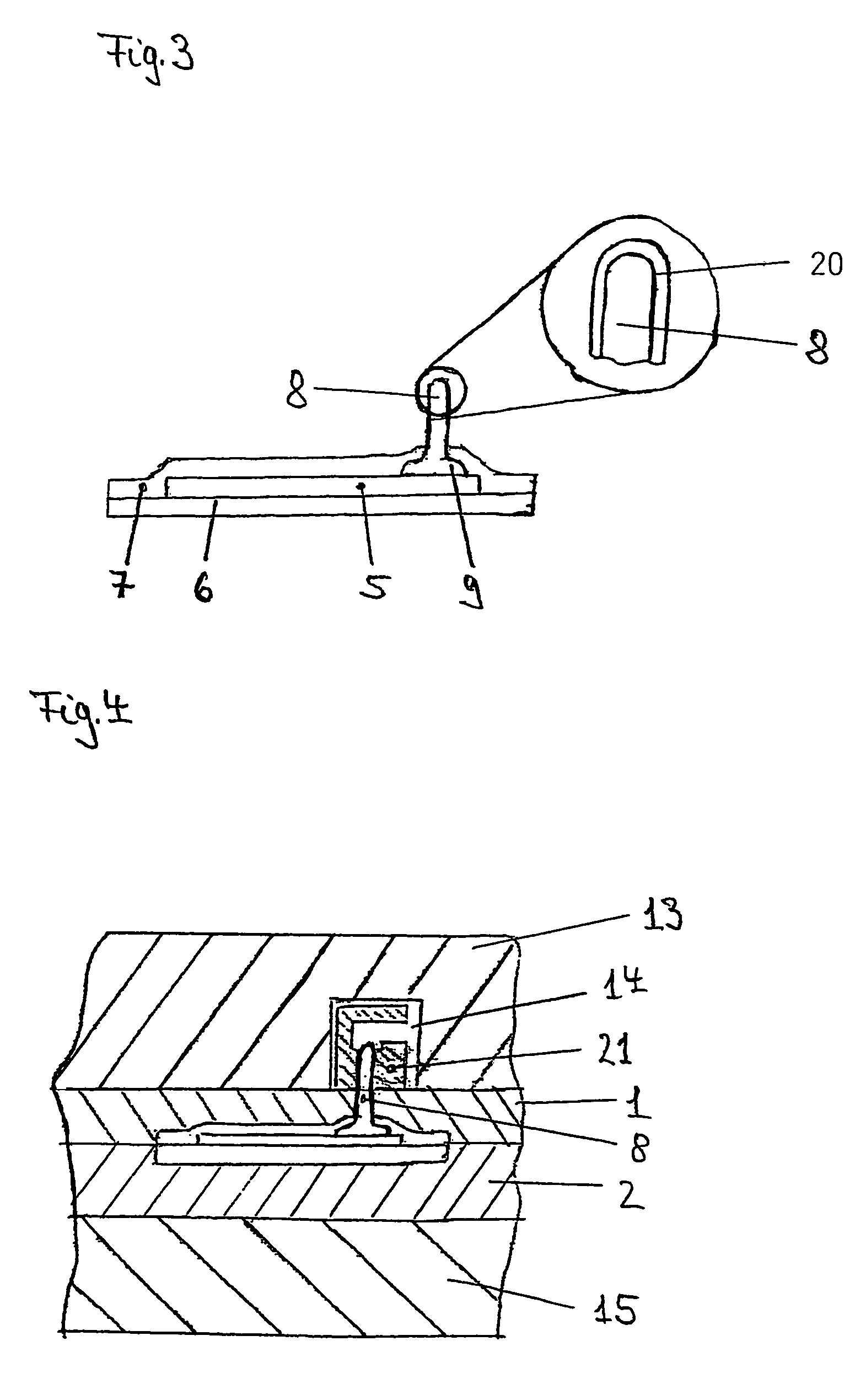Device for determining strains on fiber composite components
a technology for fiber composite components and devices, applied in the direction of mechanical measurement arrangements, instruments, mechanical means, etc., can solve the problems of affecting the mechanical stiffness and strength of components, affecting the performance of components, so as to achieve the effect of small hysteresis effects, low cost and high measurement accuracy
- Summary
- Abstract
- Description
- Claims
- Application Information
AI Technical Summary
Benefits of technology
Problems solved by technology
Method used
Image
Examples
Embodiment Construction
[0023]FIG. 1 of the drawing shows, in a partial cut-out section manner, an apparatus for the determination of a strain or for the inspection and for the load monitoring on a fiber composite material component 1 with a foil strain gage 3 integrated in the fiber layers 2 and with a connected evaluating apparatus 4.
[0024]The fiber composite material component 1 is illustrated only in a partial cut-out portion, of a fiber composite material consisting of only two layers 2, between which the strain gage 3 is arranged. Such fiber composite materials 1 generally consist of plural layers, preferably of glass, carbon or aramid fiber plies. These are usually laid one on top of another and are impregnated by means of a polymeric material, and are thereby fixedly or rigidly connected with one another. Depending on the desired strength requirements, fiber layers are laid one on top of another and are oriented in the force and tension direction.
[0025]Such fiber composite material components are u...
PUM
| Property | Measurement | Unit |
|---|---|---|
| diameter | aaaaa | aaaaa |
| length | aaaaa | aaaaa |
| thicknesses | aaaaa | aaaaa |
Abstract
Description
Claims
Application Information
 Login to View More
Login to View More - R&D
- Intellectual Property
- Life Sciences
- Materials
- Tech Scout
- Unparalleled Data Quality
- Higher Quality Content
- 60% Fewer Hallucinations
Browse by: Latest US Patents, China's latest patents, Technical Efficacy Thesaurus, Application Domain, Technology Topic, Popular Technical Reports.
© 2025 PatSnap. All rights reserved.Legal|Privacy policy|Modern Slavery Act Transparency Statement|Sitemap|About US| Contact US: help@patsnap.com



